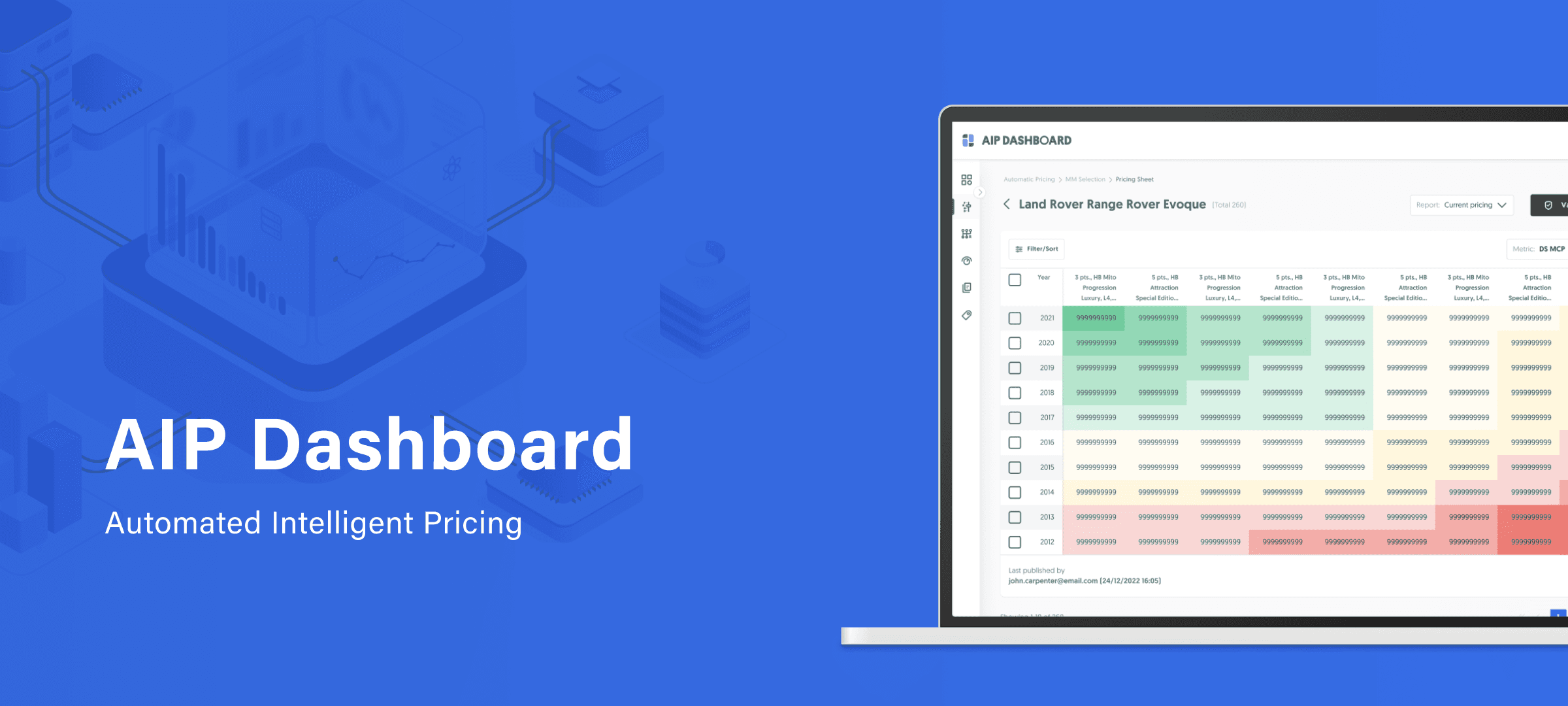
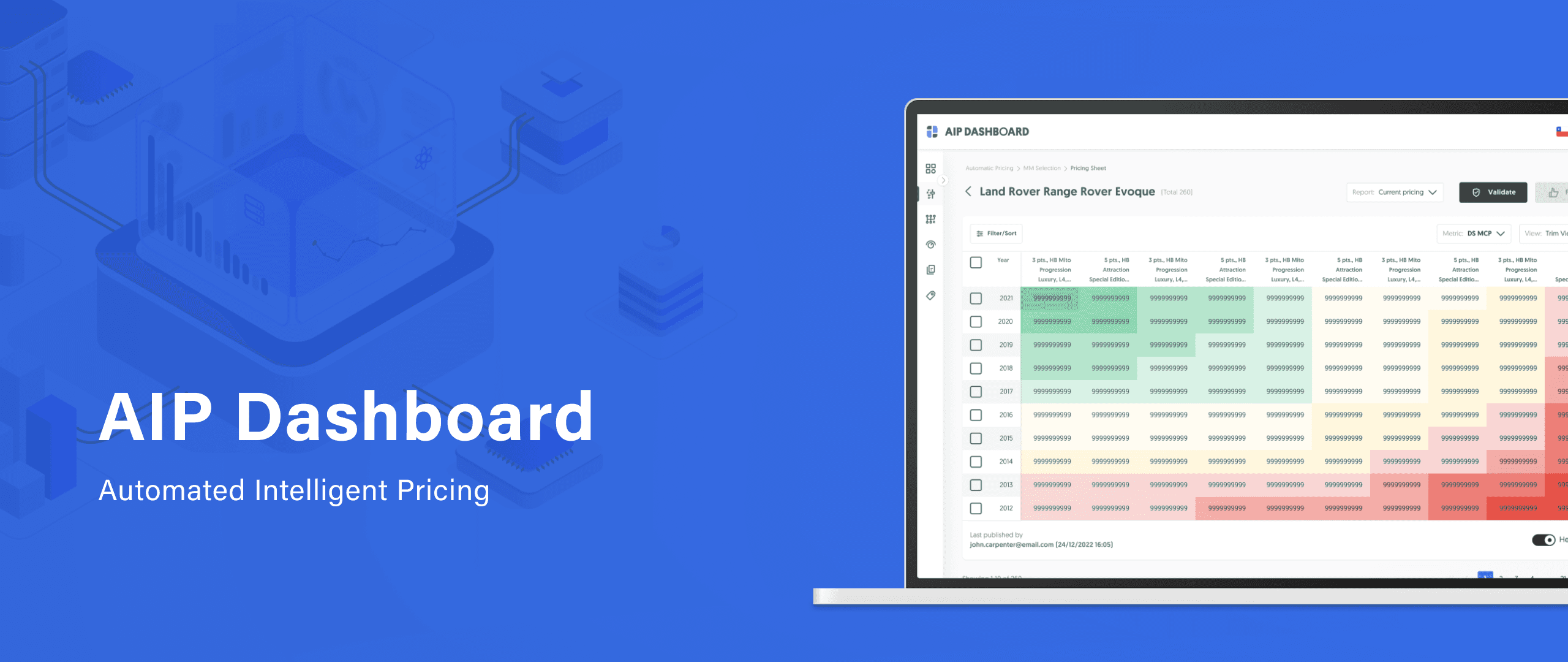


Automated Intelligent Data-Driven Pricing Platform
Automated Intelligent Data-Driven Pricing Platform
Automated Intelligent Data-Driven Pricing Platform
Automotive
Automotive
Automotive
B2B
B2B
B2B
Desktop (Web)
Desktop (Web)
Desktop (Web)
The remaining part of my case study is currently not optimised for this resolution. Kindly switch to your desktop or laptop device with a resolution of 1280px or higher to view the rest of it.
Apologise for the inconvenience caused 🫣


The remaining part of my case study is currently not optimised for this resolution. Kindly switch to your desktop or laptop device with a resolution of 1280px or higher to view the rest of it.
The remaining part of my case study is currently not optimised for this resolution. Kindly switch to your desktop or laptop device with a resolution of 1280px or higher to view the rest of it.
Apologise for the inconvenience caused 🫣


Project Overview
Project Overview
Project Overview
Project Goal
Project Goal
Project Goal
Build a pricing tool with real-time capabilities to accurately predict and recommend prices for buying, auctioning, and selling cars, enabling users to make profitable decisions.
Build a pricing tool with real-time capabilities to accurately predict and recommend prices for buying, auctioning, and selling cars, enabling users to make profitable decisions.
Build a pricing tool with real-time capabilities to accurately predict and recommend prices for buying, auctioning, and selling cars, enabling users to make profitable decisions.
Solution
Solution
Solution
Automated Intelligent Pricing (AIP) is an automated, data-driven pricing tool that allows users to adopt effective pricing strategies and make well-informed, profitable decisions for the purchase and sale of pre-owned cars.
Automated Intelligent Pricing (AIP) is an automated, data-driven pricing tool that allows users to adopt effective pricing strategies and make well-informed, profitable decisions for the purchase and sale of pre-owned cars.
Automated Intelligent Pricing (AIP) is an automated, data-driven pricing tool that allows users to adopt effective pricing strategies and make well-informed, profitable decisions for the purchase and sale of pre-owned cars.
Design Team
Design Team
Design Team
User Experience Designer
User Experience Designer
User Experience Designer
Time Frame
Time Frame
Time Frame
6 Months (Sep 2022 - Feb 2023)
6 Months (Sep 2022 - Feb 2023)
6 Months (Sep 2022 - Feb 2023)
Tools
Tools
Tools
Figma & Miro
Figma & Miro
Figma & Miro
Context
In the world of pre-owned cars, price can make or break a deal. It's the major factor influencing customers' buying and selling decisions. Mastering the art of pricing in a dynamic economy can help gain a competitive edge and maximise profitability.
Effective pricing requires staying ahead of consumer behaviour, managing inventory smartly, and adapting pricing strategies depending on varying geographical and macro-economic factors.
Why do we need
to Automate?
The business identified several gaps in the current pricing process adopted by the pricing team and wanted to standardise and automate the pricing process to tackle such issues and create a seamless ecosystem on a global level.
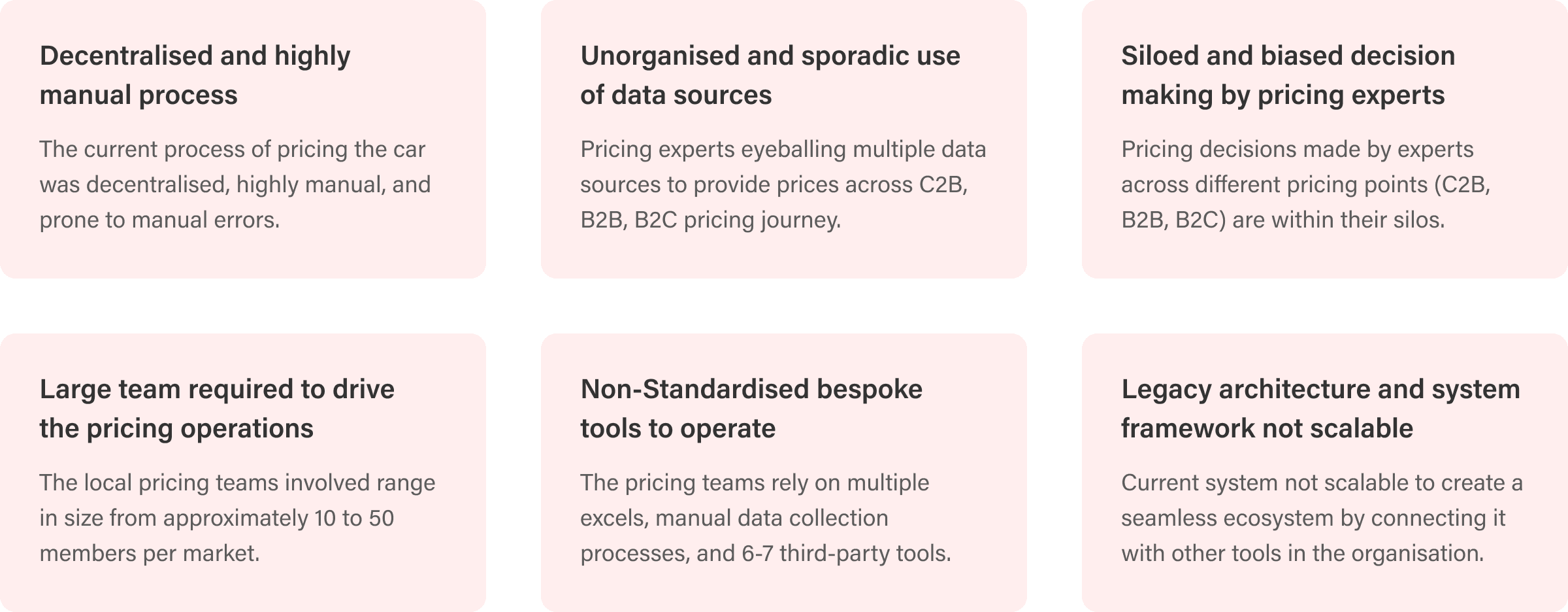
Understanding the car's pricing journey
The car's journey in our system consists of three distinct stages. Each stage requires taking multiple strategic decisions such as the margins to be achieved, usage and damage related factors to be considered, etc.
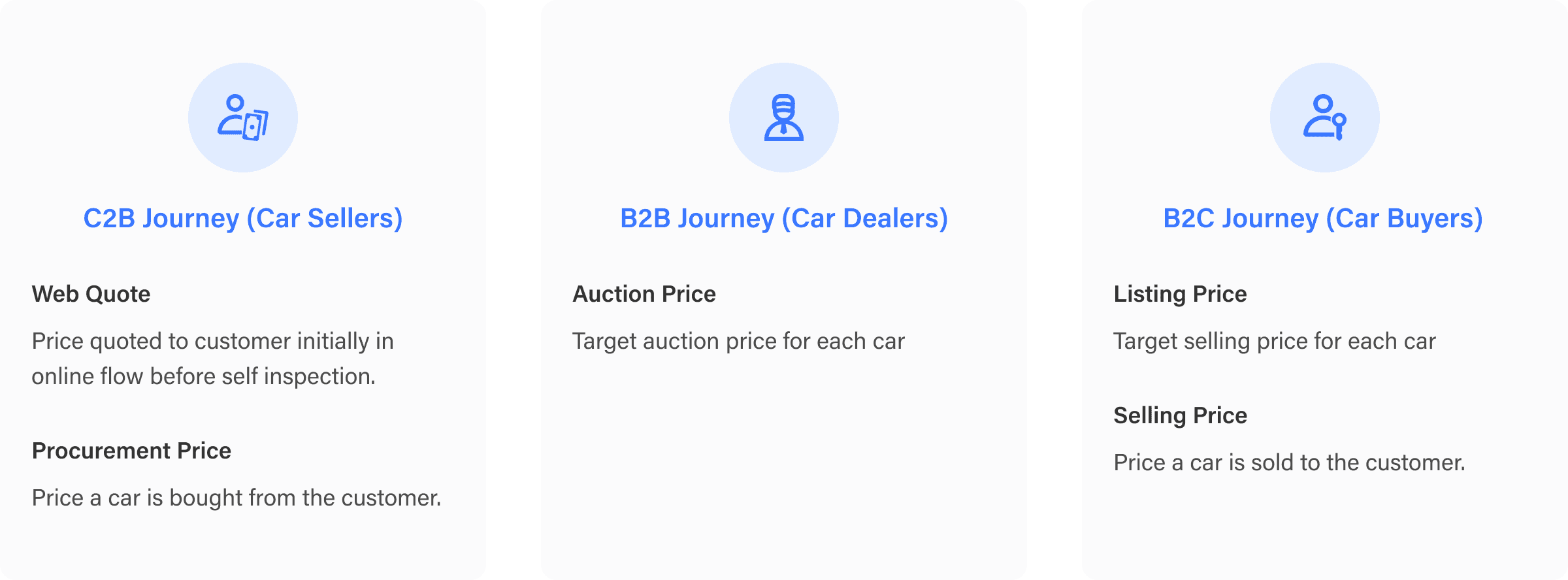
Pricing Approach
A feedback-based self-learning loop provides the base price for setting transaction prices throughout the car's C2B (Buying), B2B (Auction), and B2C (Selling) journey.

How do we price
the car?
Building blocks to price the car.

User Needs
The primary needs and requirements of the users span across eight distinct user roles
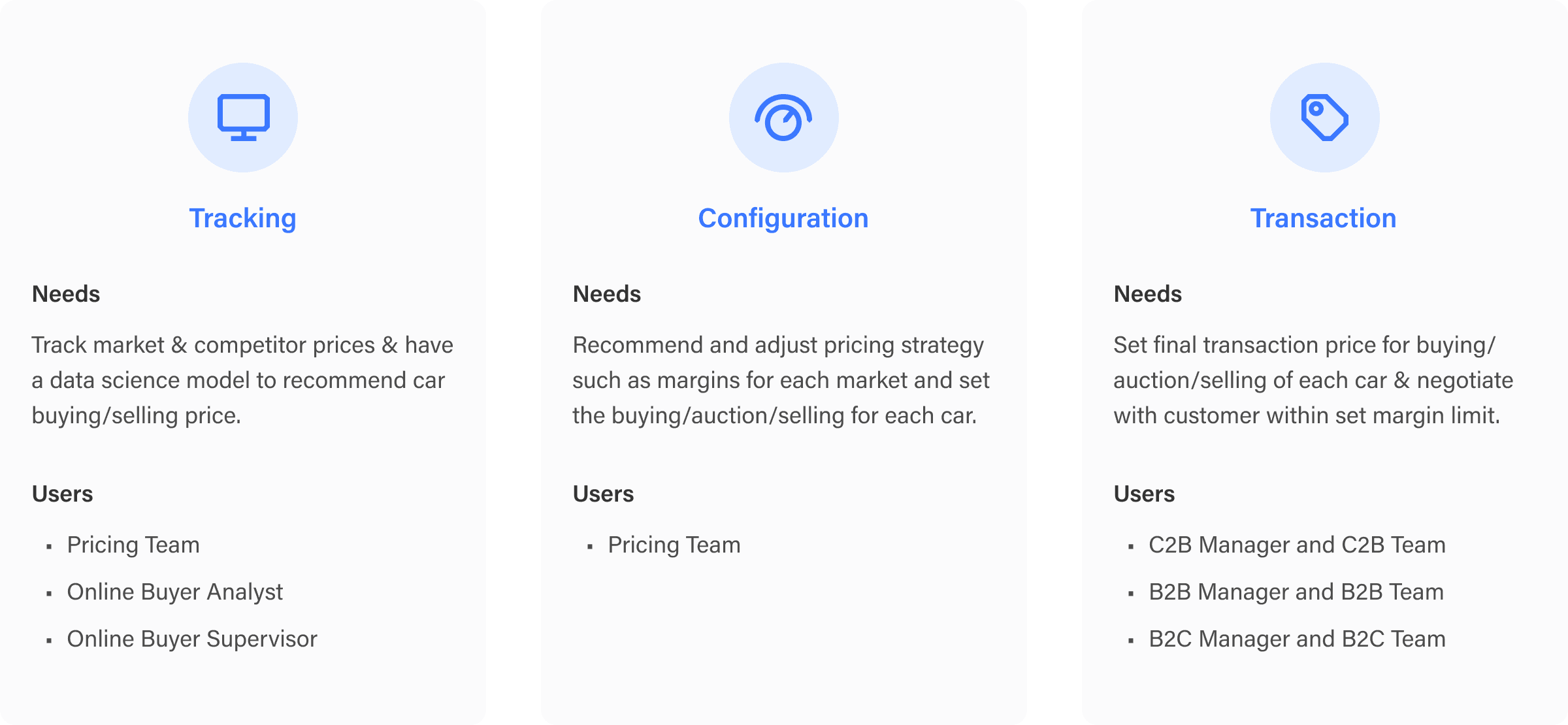
User Goals
3 core goals of the users while interacting with the platform.

The Process
Closely collaborated with business, product, operations, data science and engineering team to understand the different use cases, data and pricing strategies, features and technical constraints.

Created a high-level navigation structure and placed the relevant data points, features and use cases.
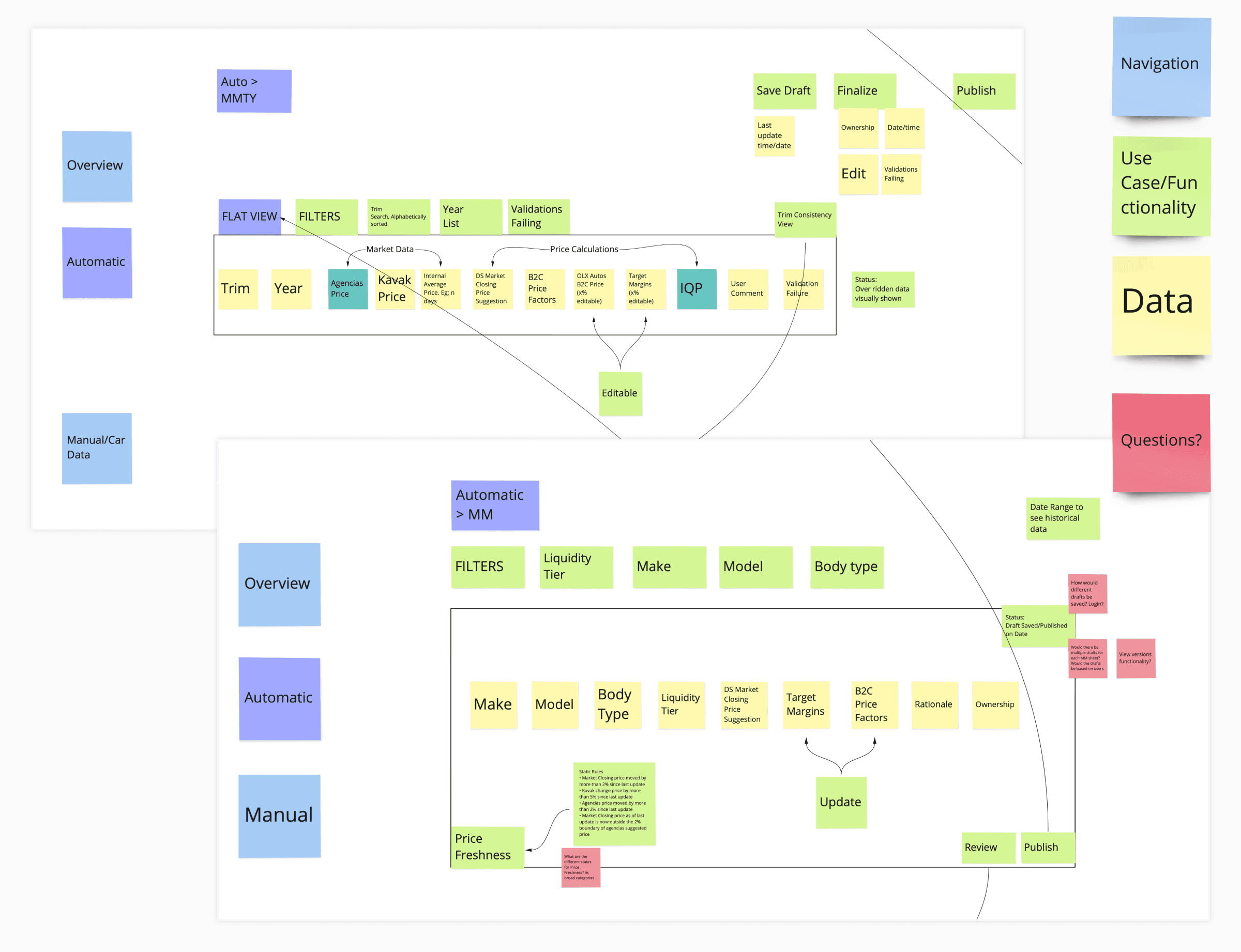
Breaking it down on a workflow level by prioritising the relevant use cases, features, data points, and user actions required to execute tasks.
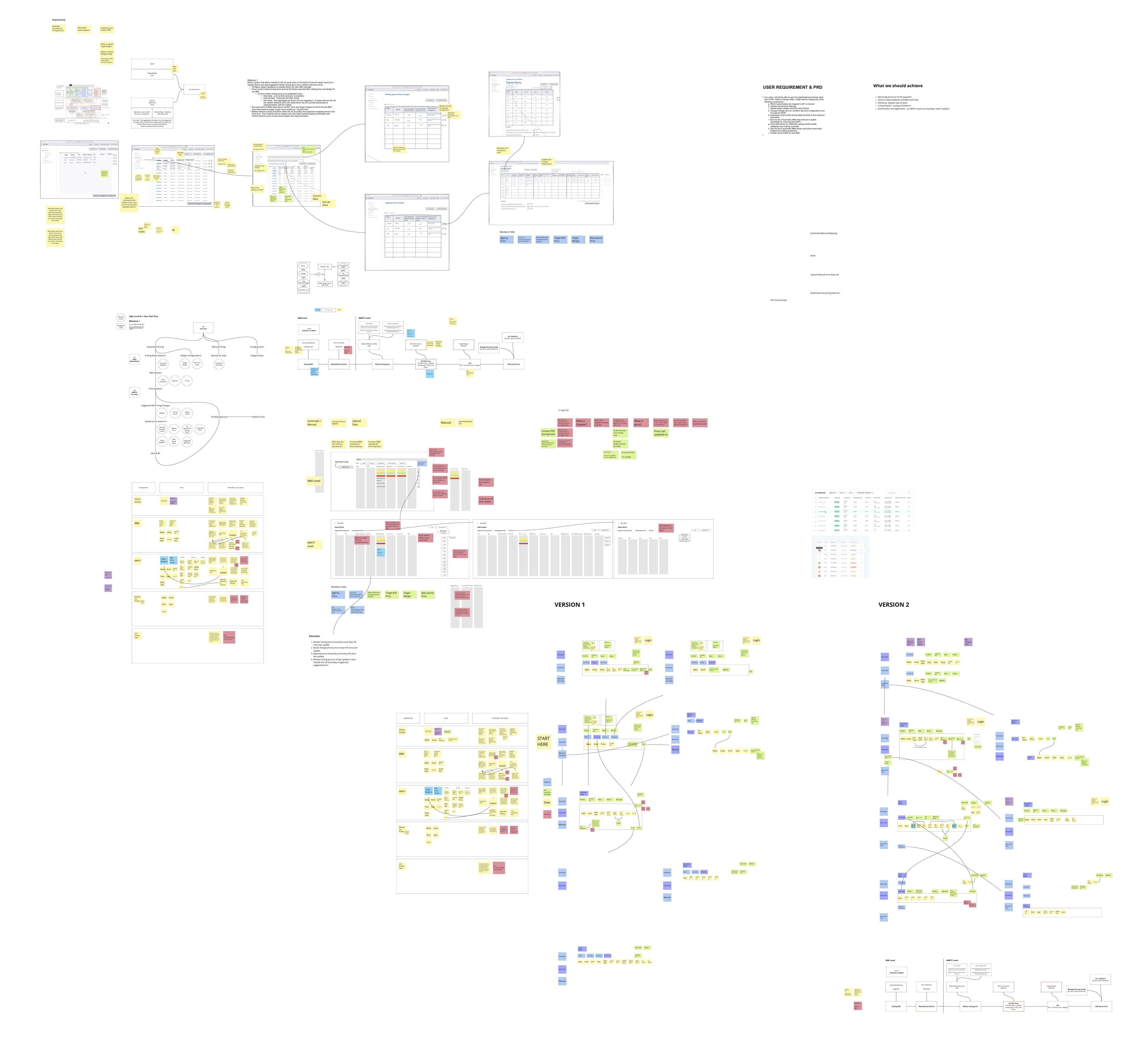
An overview of the brainstorming done to gain a deeper understanding of the application's functionality and analysis of the various use cases and user tasks.

Information architecture
Global
Local
Contextual
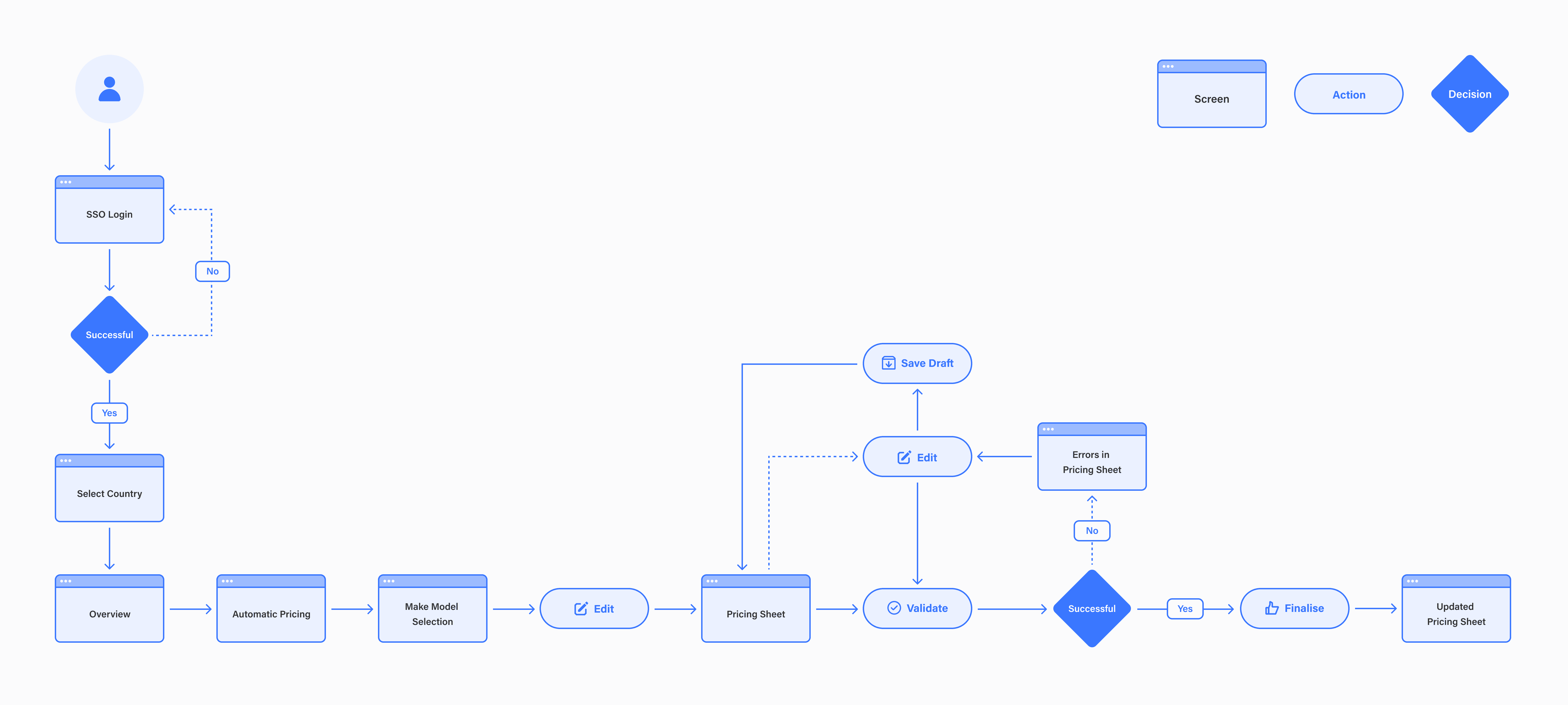
Userflow to finalise or edit data-suggested price for a specific MMTY (make, model, trim, year)
Wireframing
The different stages of the wireframing process aims to effectively communicate design decisions to the relevant stakeholders and end users, gathering their feedback, and iterating until the final solution aligns with the project requirements and user needs.

Stage 1 - Low/Mid Fidelity Wireframes
Gaining a clear understanding of the project's core concept, establishing an accurate information hierarchy, and determining the relevant functionalities.
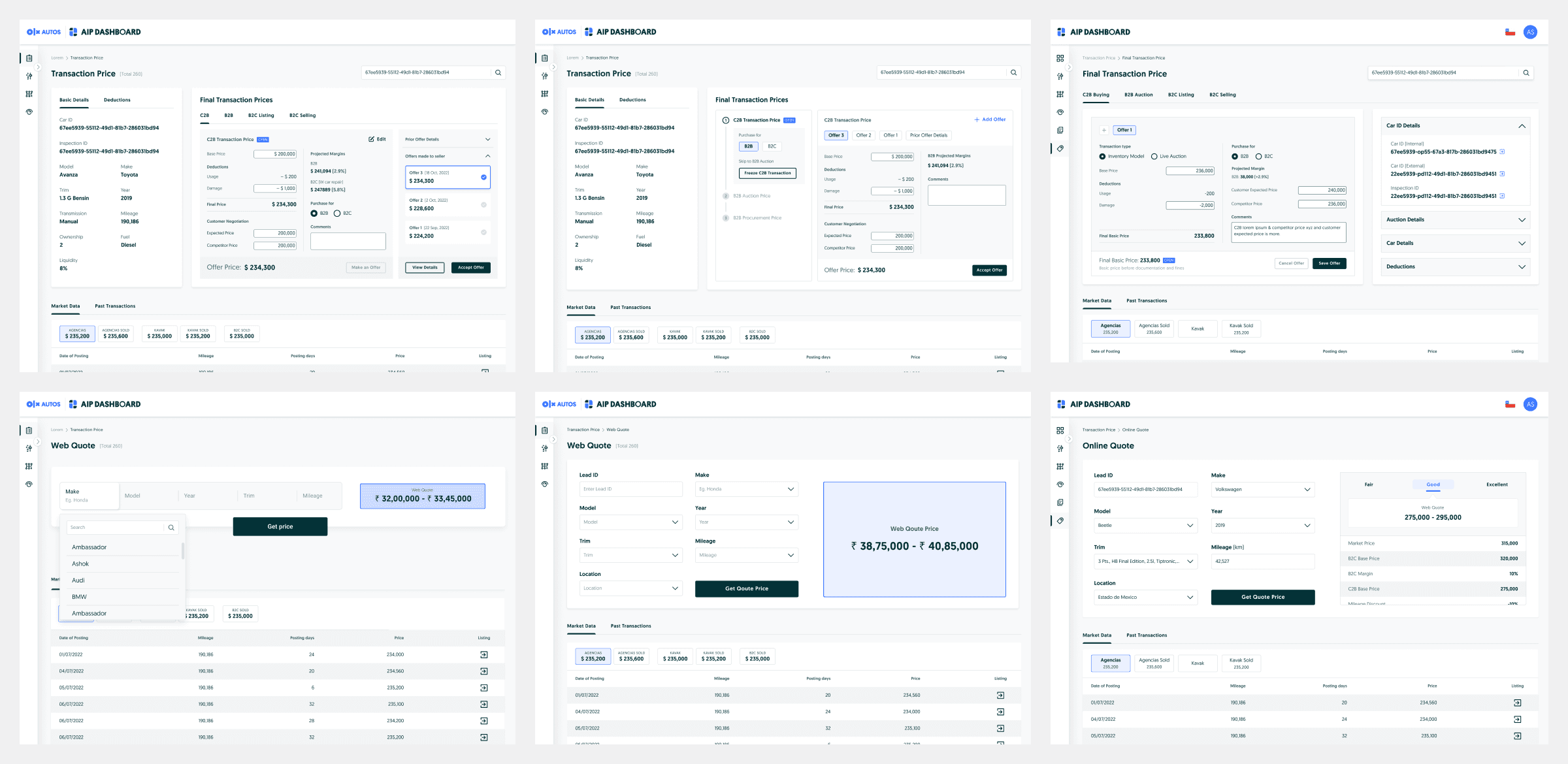
Stage 2 - High Fidelity Iterations
Iterating the design to align the business and user goals. Further, validating it by actively collaborating and taking feedback with the stakeholders and end-users involved.
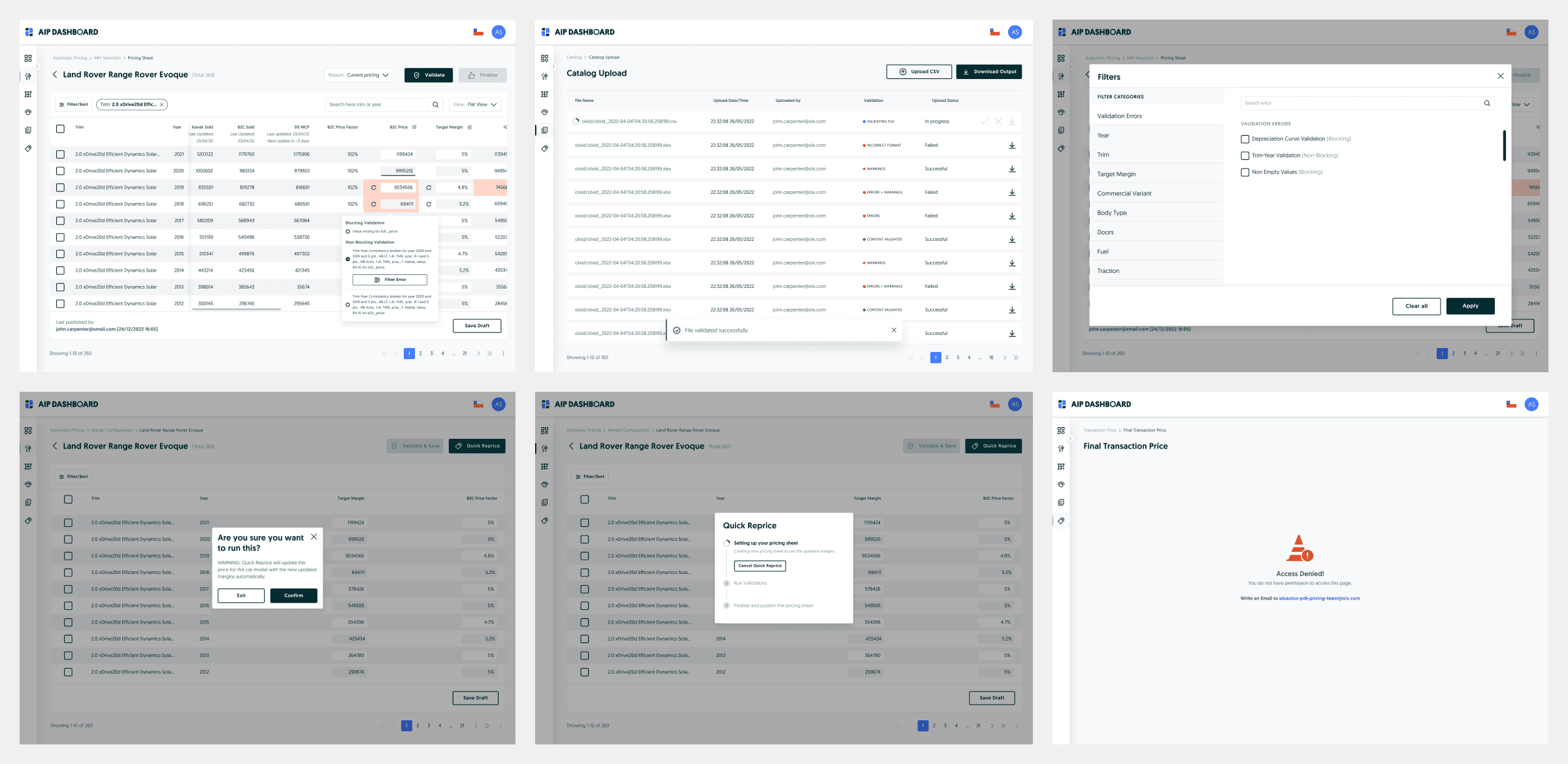
Stage 3 - High Fidelity Prototype
Delivering the final solution at a workflow level by considering the design for various user stories, tasks, features, including validation, error handling screens and interaction patterns.
Final Solution
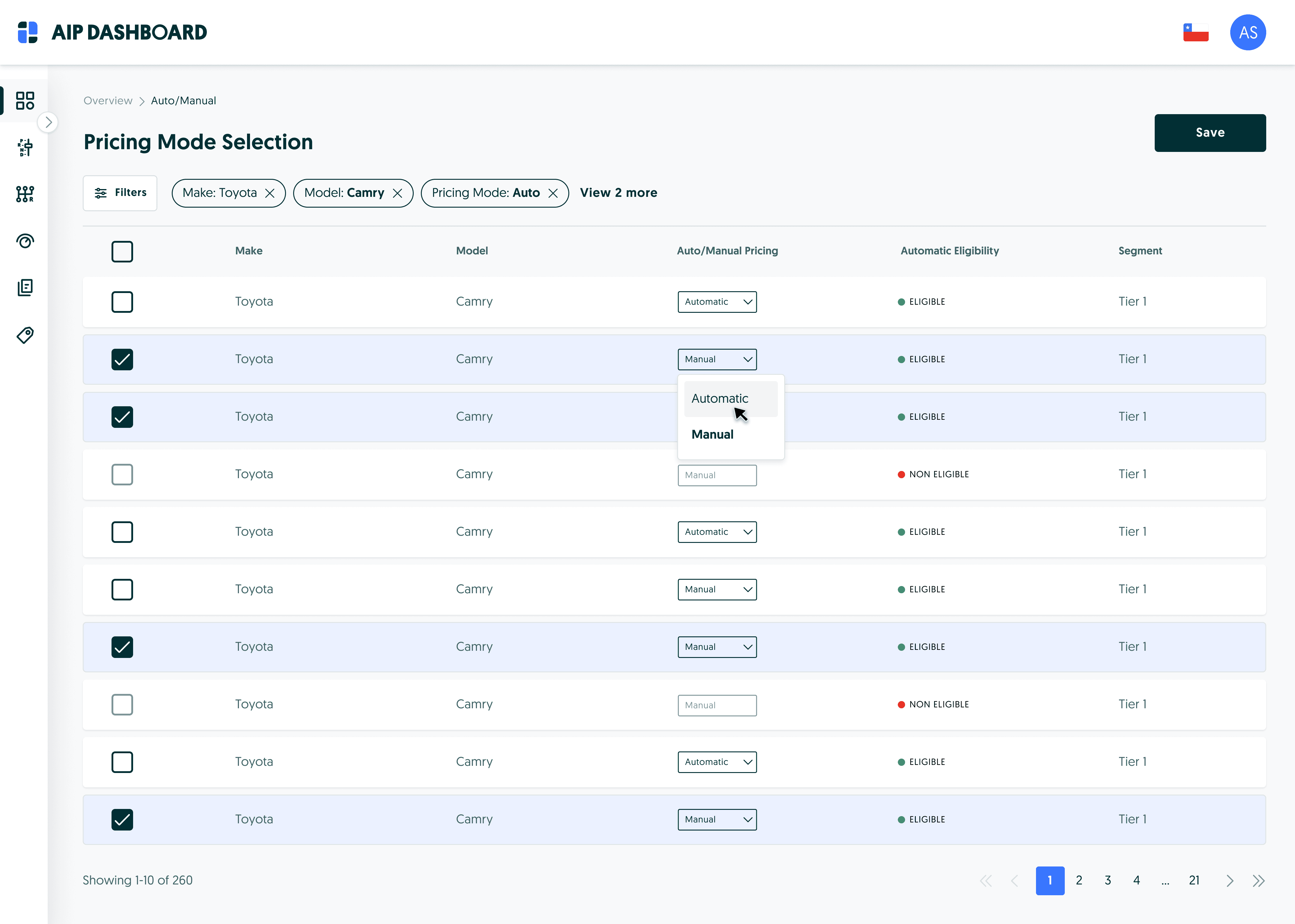
Pricing Mode Selection
This allows user the ability to switch from manual to automatic pricing and vice versa based on the automatic pricing eligibility.
The make and models mapped to automatic pricing will have the price recommendations based on the platform's data science model.
Make Model Selection
This allows users to get an overview of the live prices, previous and current average market closing price, liquidity tier, price freshness, status, etc.
Based on the logic set for price freshness in the backend, the platform's data science modal recommends the user to update price.
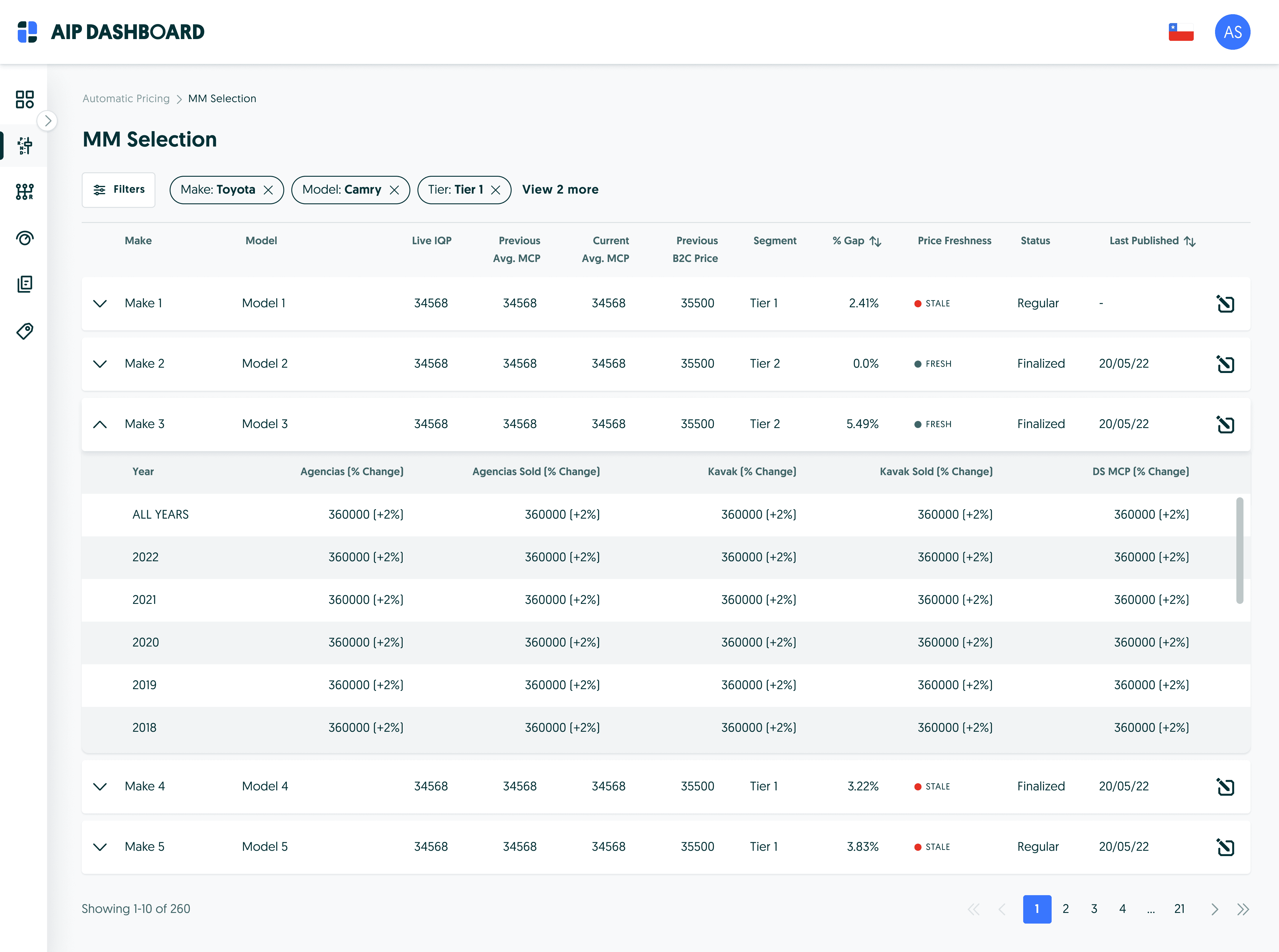

Pricing Sheet - Flat View
The pricing sheet flat view serves the purpose of allowing users to access a comprehensive list of all SKUs associated with a specific car Make and Model (MM).
Users can review the suggested price calculations provided by the data science model, make overrides if necessary, and subsequently update and publish prices.
Pricing Sheet - Trim View
The trim view of the pricing sheet allows user with an overview of various pricing elements across multiple years, such as market closing price suggestions, B2C prices, initial quote prices, and more.
Furthermore, it highlights pricing inconsistencies and provides an option for users to activate a heat map, making it convenient to visualise any inconsistencies in trim prices.

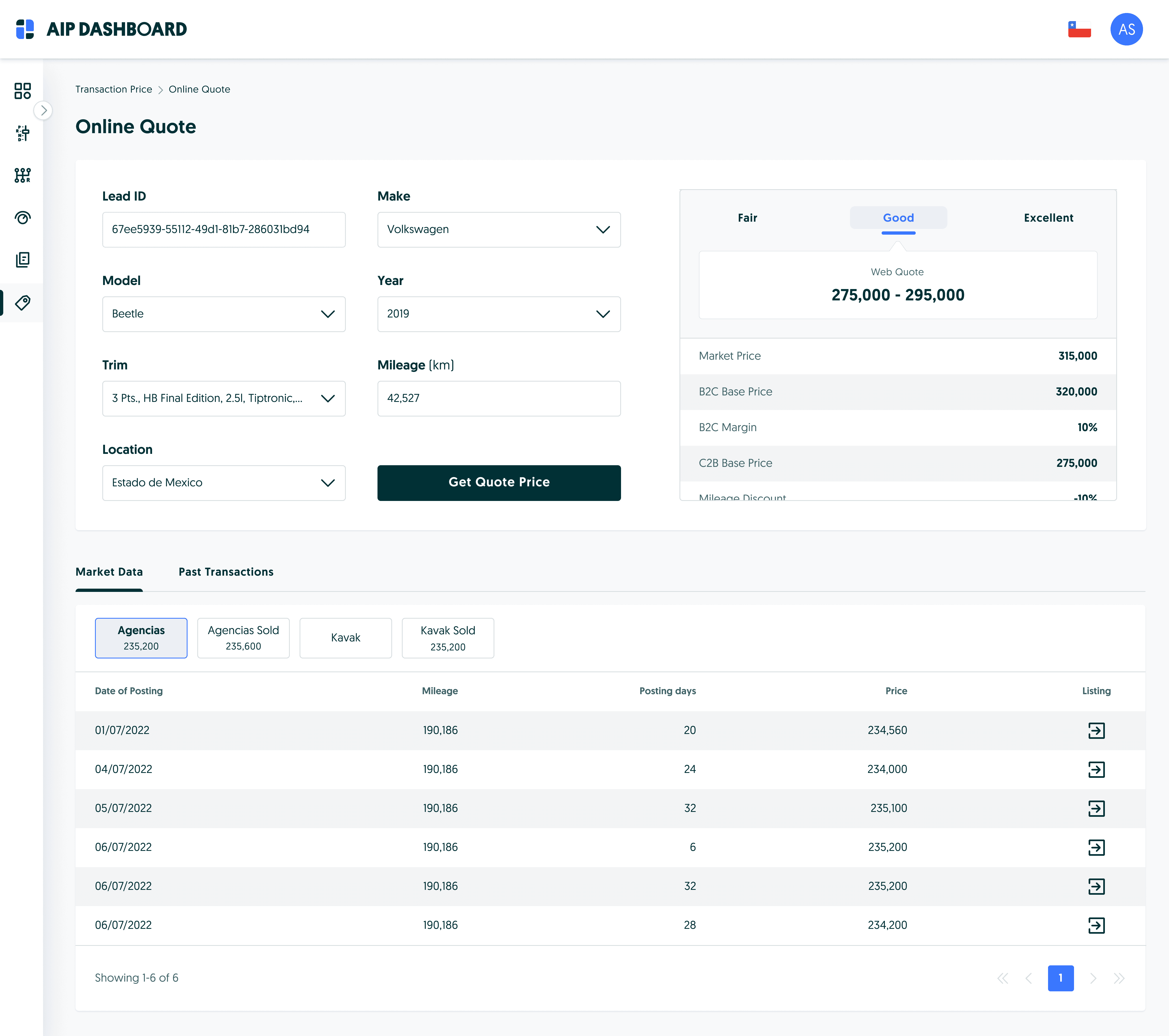
Online Quote
This allows users to quickly generate an online quote price for customer's car by using the basic details provided by them.
Additionally, it offers valuable insights on the prices offered by competitors and past transactions done for cars of a similar make, model, trim, and year (MMTY).
Final Transaction Price
This allows users to use data recommended price to set final transaction prices for buying, auctioning and selling car and negotiating within a predefined margin limit.
Moreover, additional information and insights such as deductions, competitors data, etc. are provided to the users to get a detailed understanding of the market, helping them in their pricing decision and profitability.
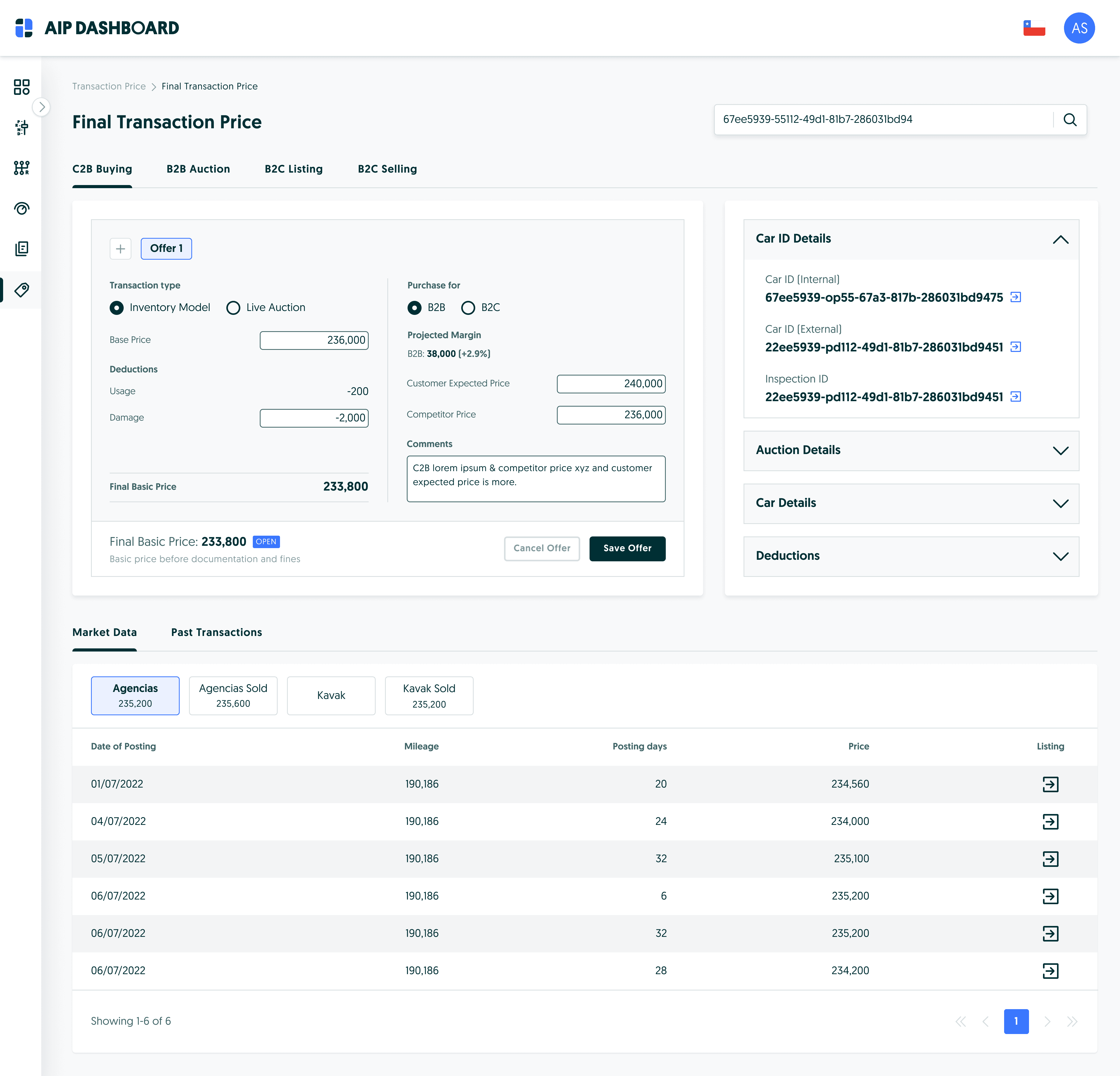
Outcome

Usability Testing
and Feedback
Being a highly collaborative project, we proactively engage with stakeholders and end users on a weekly basis to gather their feedback and understand their needs. We then analyse and categorise their needs into essential requirements and desirable features and work towards delivering solutions around it.
Additionally, we employ a change management process to facilitate user learning and training, ensuring smooth adoption of the tool and maximizing its benefits.
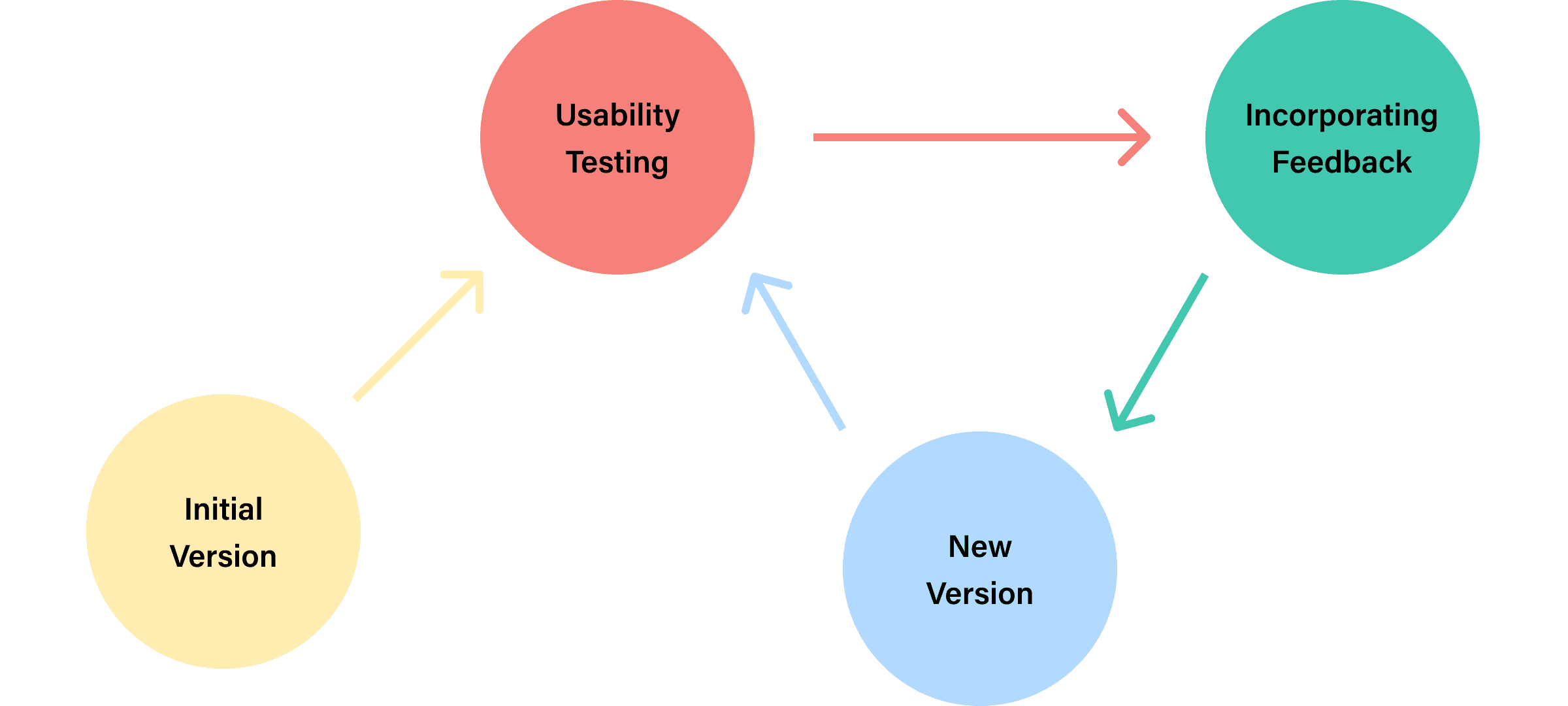
Next Steps
Feature enhancement and logic refinement
Improving the features and refining backend logic to elevate the overall experience and encouraging wider adoption of the tool.
Creating an ecosystem
Establishing a seamless ecosystem, integrating the Automated Intelligent Pricing tool with various applications and tools across the organisation.
Inventory Planning
Leveraging data-driven demand and supply planning and forecasting to optimise the inventory, cash flow, etc.
Data Visualisation
Using data visualisation to provide quick overview as well as deeper insights to stakeholders and end-users.